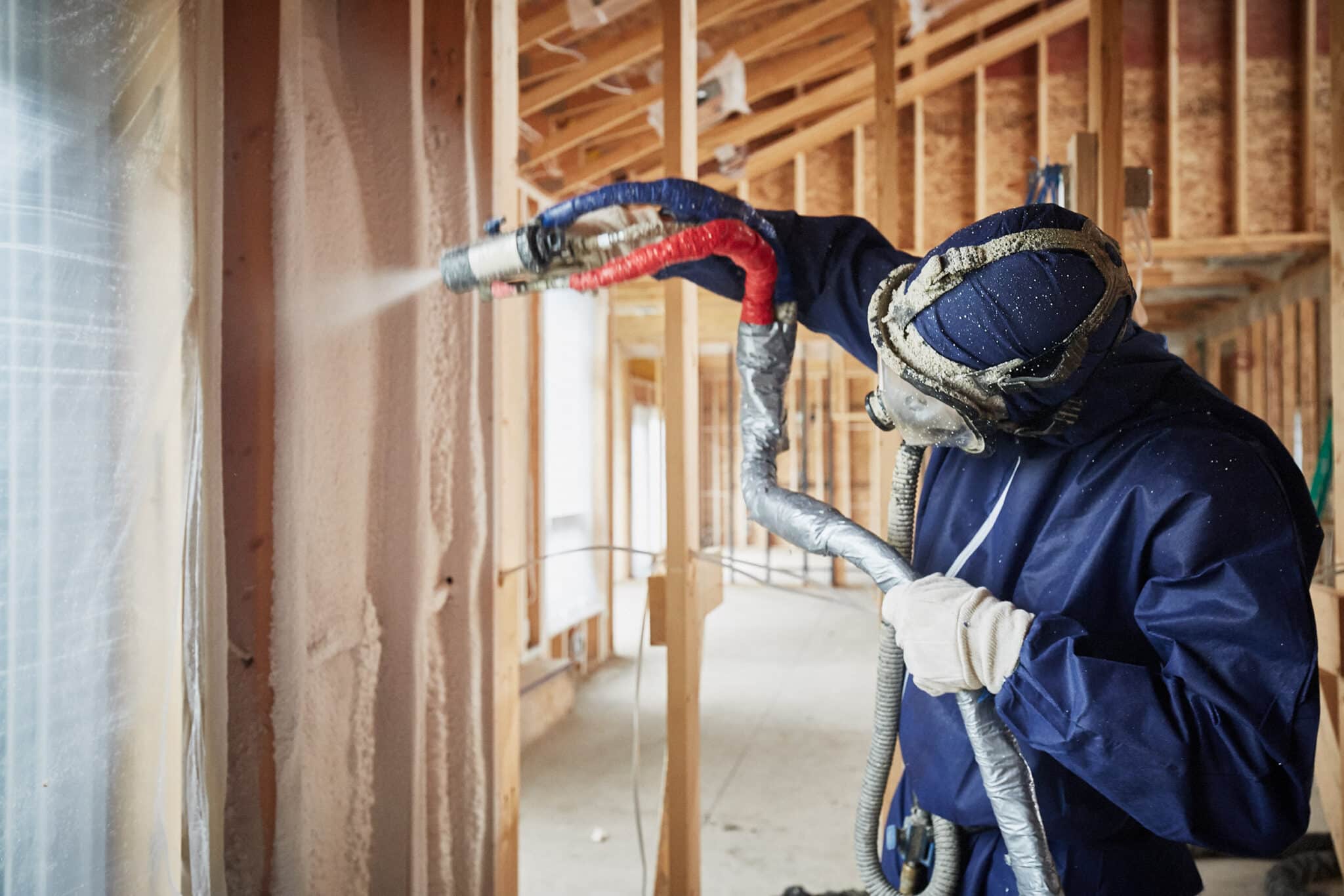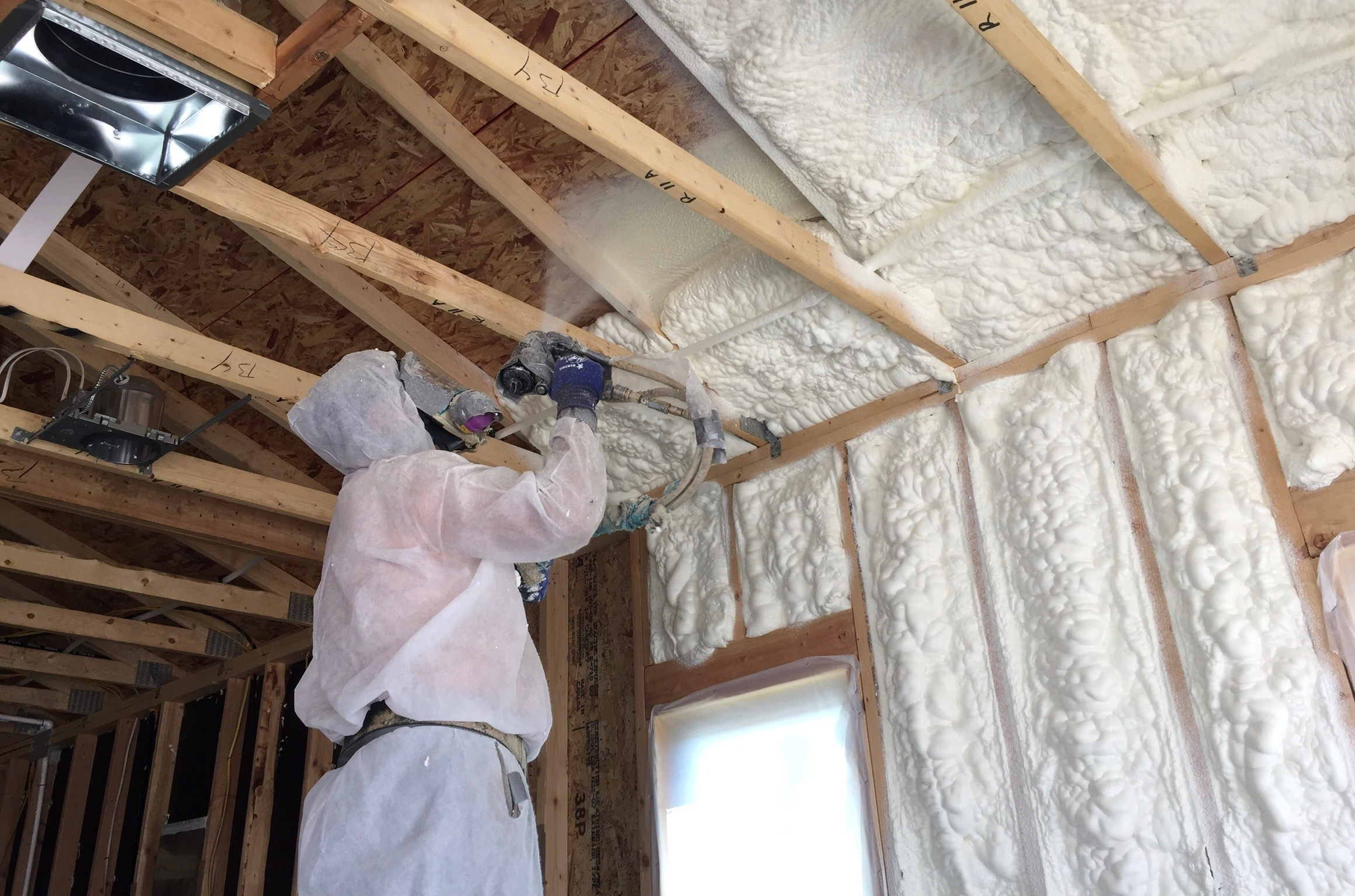Spray foam insulation is one of the most effective strategies for improving residential energy efficiency. It provides a high thermal resistance (R-value) and expands upon application to seal gaps, cracks, and voids—something traditional materials like fiberglass and cellulose cannot achieve. Homeowners who choose spray foam often see immediate and long-term energy savings, improved indoor air quality, and reduced moisture problems.
This article provides a detailed, data-backed breakdown of professional residential spray foam insulation performance, the options available, essential technical specifications, and practical considerations to help homeowners make informed decisions. Every element is presented with clarity and structure to serve both professionals and residential consumers aiming to improve building performance.
How Spray Foam Improves Energy Efficiency
Spray foam works by expanding upon application to fill cavities, hard-to-reach spaces, and structural gaps. This creates a continuous barrier against air infiltration, heat transfer, and moisture intrusion. Unlike batt or blown-in insulation, spray foam insulates and air seals simultaneously.
Key Energy Performance Outcomes
- Thermal Envelope Tightening: Reduces uncontrolled air exchange between interior and exterior.
- Minimized Heat Loss/Gain: Retains desired indoor temperature, reducing HVAC cycling.
- Decreased Energy Bills: Annual utility cost reduction of up to 30% in some climates.
- Moisture Control: Closed-cell variants act as vapor barriers to prevent condensation in wall assemblies.
- Enhanced Structural Durability: Closed-cell spray foam increases racking strength and improves wind uplift resistance.
Comparison of Insulation Options
| Feature | Closed-Cell Spray Foam | Open-Cell Spray Foam | Fiberglass Batts | Cellulose Blown-In |
|---|---|---|---|---|
| R-Value per inch | 6.5 – 7.0 | 3.5 – 3.7 | 2.9 – 3.8 | 3.2 – 3.8 |
| Air Sealing | Excellent | Good | Poor | Fair |
| Moisture Barrier | Yes | No | No | Limited |
| Structural Strength | High | Low | None | None |
| Sound Dampening | Moderate | High | Low | Moderate |
| Application Areas | Walls, roofs, foundations | Attics, walls, ceilings | Walls, ceilings | Attics, walls |
| Lifespan | 30–50 years | 20–30 years | 10–25 years | 15–30 years |
| Installed Cost per sq. ft. | $1.00 – $2.00 | $0.50 – $1.00 | $0.30 – $0.60 | $0.40 – $0.70 |
Bonus Tip: Choose closed-cell foam for crawlspaces and basements due to its moisture resistance and structural reinforcement.
Technical Specifications
| Specification | Closed-Cell Spray Foam | Open-Cell Spray Foam |
|---|---|---|
| Density | 1.75 – 2.0 lb/ft³ | 0.4 – 0.6 lb/ft³ |
| Expansion Rate | 30–40x original volume | 100x original volume |
| Vapor Permeability | 0.8 perms or less | 10 perms or more |
| Sound Transmission Class (STC) | 37–39 | 45–50 |
| Water Absorption | < 1% | Up to 50% (can retain water) |
| Fire Rating (ASTM E84) | Class I (with coating) | Class I (with coating) |
| Dimensional Stability | High | Moderate |
How Spray Foam Performs Across Climate Zones
Energy performance depends heavily on regional climate. Closed-cell foam provides the most benefit in humid, coastal, and cold regions, while open-cell foam can be suitable for interior use in temperate zones.
| Climate Zone Type | Recommended Spray Foam Type | Primary Benefit |
|---|---|---|
| Cold (Zones 5–7) | Closed-Cell | Prevents ice damming and condensation |
| Mixed-Humid (Zone 4) | Closed or Open-Cell | Balances air sealing with breathability |
| Hot-Humid (Zone 2–3) | Closed-Cell | Superior moisture resistance and air control |
| Hot-Dry (Zone 1–3) | Open-Cell | Sufficient thermal insulation for interiors |
| Marine (Zone 4C) | Closed-Cell | Resists salt air, wind-driven rain |
Bonus Tip: Consider hybrid insulation (e.g., closed-cell in rim joists, open-cell in attic) to balance performance and cost.
Market Research and Data-Driven Insights
- Energy Star estimates show homes with air-sealed envelopes and proper insulation save 15% on heating and cooling costs, on average.
- Building America Program (DOE) confirms that spray foam insulation can reduce energy loss through the envelope by up to 50% when paired with air sealing strategies.
- In a 2024 case study of 150 retrofitted homes across the Midwest, homes with closed-cell foam installed showed energy cost reductions of 25%–32% within the first year.
- Insurance discounts for homes using closed-cell spray foam in hurricane zones are increasingly common due to the added structural reinforcement.
Things to Consider Before Making a Decision
Spray foam insulation is not universally ideal. Certain conditions, building types, and project scopes may require alternate strategies or a combination of materials.
1. Structural Accessibility
- Existing homes with drywall in place may face higher installation costs due to prep work.
- Attics, basements, rim joists, and crawlspaces offer accessible areas with the highest ROI.
2. HVAC Compatibility
- Spray foam can drastically reduce HVAC load needs.
- Oversized systems may short-cycle and require downsizing or control system adjustments.
3. Moisture Management
- Open-cell foam allows vapor diffusion and is not a moisture barrier.
- Closed-cell foam is non-permeable and suitable for flood-prone or high-humidity areas.
4. Indoor Air Quality
- Spray foam must cure properly; off-gassing can occur if not installed to spec.
- Ensure installers follow manufacturer curing time and ventilation guidelines.
5. Code Compliance
- Local building codes may require ignition barriers or vapor retarders.
- Compliance with IRC and IBC standards is critical for attic and crawlspace applications.
Common Questions
What makes spray foam more efficient than batt insulation?
Spray foam provides both insulation and air sealing in one material, drastically reducing heat loss through infiltration—a key weakness of batt insulation.
Can it be used in conjunction with other materials?
Yes. Hybrid insulation systems (e.g., fiberglass batts + spray foam air sealing) can reduce costs while improving performance.
Is spray foam waterproof?
Closed-cell spray foam is water-resistant and can act as a vapor barrier; open-cell foam is not waterproof and can absorb moisture.
What’s the payback period?
Depending on local climate and energy rates, most homeowners recover spray foam installation costs through energy savings in 3–6 years.
Residential Spray Foam FAQ
How long does spray foam insulation last?
Closed-cell spray foam can last 30–50 years; open-cell typically lasts 20–30 years. Proper installation ensures maximum longevity.
Will spray foam lower my utility bills?
Yes. By tightening the building envelope, it reduces the load on heating and cooling systems, leading to significant monthly savings.
Is spray foam a good choice for attics?
Yes. Especially in unvented attics, spray foam eliminates thermal bridging and provides air sealing that other materials can’t match.
Does spray foam cause indoor air quality issues?
If installed correctly and allowed to cure fully, it is safe. Always use certified installers who follow safety protocols.
Are there any environmental concerns?
Spray foam is derived from petrochemicals and has a high embodied energy. However, the energy savings over time significantly offset this footprint.
Make the Right Decision
Expert Spray foam insulation contractor offers one of the highest-performing options available for residential energy efficiency upgrades. It reduces air leaks, increases thermal performance, controls moisture, and strengthens structural components—all in one application. While it comes with a higher upfront cost than fiberglass or cellulose, its long-term benefits in energy savings, comfort, and durability make it a sound investment.
Evaluate your home’s structure, budget, and climate to determine the best spray foam type—closed-cell for high-strength, moisture-resistant needs or open-cell for cost-effective, sound-dampening solutions. Consult with qualified professionals, request an energy audit, and ensure that code requirements are met.
Spray foam is a strategic, long-term investment—not just insulation.
Reviewer: Maria Lopez reviewed the article and brought 12 years of insulation industry experience to improve the guidance. Practical tips were added, and the content was made clearer and more useful for contractors working in the field every day.











